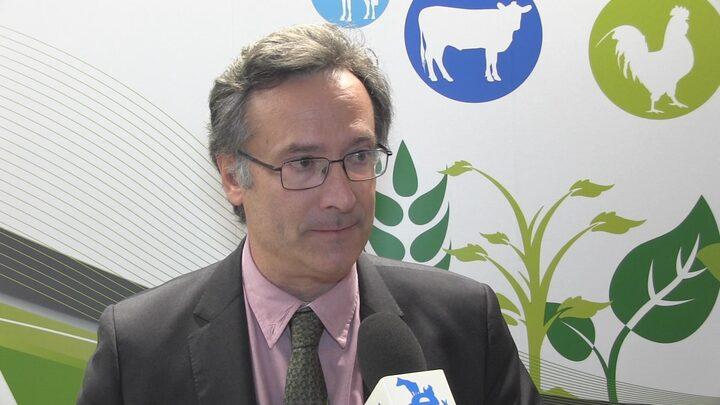Check out what is new in Poultry Industry
Find the best technical articles, forums, and videos on Poultry Industry at Engormix. Enter now and interact with the world's largest agricultural social network.
INTRODUCTION Conventional broiler production is dependent on maize as a source of energy and soybean meal as a source of protein. Nutrient digestibility of plant-based feeds in poultry is limited by the proportion of their components for which there are no corresponding endogenous enzyme secretions. These components include non-starch polysaccharides (NSPs) that are present within the cell walls of maize and soybean meal 1,2 . The NSPs are either indigestible or of very...
Comments : 0
Recommendations: 0
1. Introduction Coccidiosis is a major enteric infection of poultry that is estimated to cost more than USD 14.5 billion annual losses globally [1]. Although coccidiosis control using various anticoccidial chemicals, such as ionophores, coccidiocides, and coccidiostats, has long been a mainstream strategy in modern poultry production, alternative control strategies to antibiotics are necessary owing to the antibiotic ban [2]. Therefore, much effort has been made to develop...
Comments : 0
Recommendations: 1
Enzyme supplements are used widely in poultry diets in an attempt to improve poultry performance, feed consumption, and also minimized environmental pollutions due to the reduced output of excreta 1 . Different enzyme supplements have been developed with respect to their target substrates in feed ingredients. Exogenous xylanase is an example of an enzyme supplement to improve nutritional factors by efficiently decomposing the non-starch polysaccharides (NSP) 2 ,...
Comments : 0
Recommendations: 0
Introduction The need for the animal sector to create ever-more-sophisticated strategies for producing animal protein in increasingly environmentally and economically responsible ways is growing. In addition to setting up ethical and environmentally friendly structures for subsequent generations, this is done to ensure that food is safe for consumption today [1, 2]. The incorporation of feed additives to accomplish these objectives has grown increasingly crucial as regulations...
Comments : 0
Recommendations: 1
Introduction High cost of conventional ingredients such as maize as source of energy, soybean, groundnut cake and fish meal as source of protein in broiler’s diet has increased the cost of feed and consequently increased cost of production (Attia, 2015). The cost of feed represents about 75% of the total costs of animal production. Also, non-availability and competition existing among man, industry and livestock have necessitated the need to find cheap and available...
Comments : 0
Recommendations: 0
1. Introduction The global demand for chicken-meat is increasing. Globally, poultry meat is expected to represent 41% of all the protein from meat sources in 2030 and exceed the 34% share for pig meat, 20% for beef and 5% for sheep meat [1]. In Australia, the 46.9 kg per capita chicken-meat consumption in 2021/22 is clearly superior to pork (27.7 kg), beef (19.1 kg) and lamb (5.5 kg) with a 47.3% market share [2]. To meet this high consumption, Australian broiler operations processed...
Comments : 0
Recommendations: 0
About the study Phytase supplementation has become a standard practice for poultry diets to enhance phosphorus (P) utilization and subsequently reduce P excretion. Previous phytase studies on hen performance, eggshell and bone quality have been done over short durations and using hens of varying ages. The knowledge gap is that there are no long-term phytase studies covering the rearing period through the end of production cycle. The objective of this study was to...
Comments : 2
Recommendations: 1
Summary The short-term study was conducted to test the effects of phytase supplementation in laying hen diets during peak production on bone characteristics as well as phosphorus (P) and calcium (Ca) digestibility. Problem A large portion of dietary phosphorus is not utilized by laying hens and is excreted in feces, which leads to phosphorus pollution in the environment. Adding inorganic phosphorus to poultry diets has also become much more expensive. Phytase...
Comments : 0
Recommendations: 0
Summary This study was conducted to test the efficacy of phytase in low phosphorus and calcium diets in the late production cycle for maintaining the productivity, eggshell and bone quality of hens fed low phosphorus and calcium. Problem Exogenous phytase supplementation has become a standard practice for poultry diets to liberate available phosphorus and reduce excretion of phosphorus in manure. Many studies showed that phytase supplementation increased egg...
Comments : 10
Recommendations: 4
.jpg&w=3840&q=75)
Dr. Zeyang Li (Global consulting expert, Specialty Nutrition at Evonik) talks about the importance of this amino acid in the formulation of a broiler diet, as well as the advantages of using DL-Methionine, during this Engormix interview...
Comments : 0
Recommendations: 0
.jpg&w=3840&q=75)

Reliable and accurate nutritional data of heat processed ingredients with AMINONIR® RED
Suggested link
.jpg&w=3840&q=75)
Patented solid-state fermented Surfactin from Bacillus sp.Antibiotics-free and patented Feed additives...
Comments : 0
Recommendations: 0
.jpg&w=3840&q=75)
Brett Roosendaal (Nutrition Executive at Epol) comments on the different types of enzymes and their benefits when using soybean in animal nutrition, during this Engormix interview....
Comments : 1
Recommendations: 5
.jpg&w=3840&q=75)
Brett Roosendaal (Nutrition Executive at Epol) shares his insights on quality control methods and indicators of soybean, as well as market prices and inclusion rates, during this Engormix interview....
Comments : 1
Recommendations: 0
I. Introduction Eggs are an affordable raw agricultural commodity with a high nutrient density. Eggs serve a key role in diets around the world. Maintaining the quality of eggs is a worldwide concern. Generally, there are three types of egg quality: 1) physical, 2) functional, and 3) microbial. During this presentation, all three types of egg quality will be discussed and factors which influence egg quality characteristics will be explained. Understanding the types of egg quality, as...
Comments : 0
Recommendations: 0
I. Introduction The development of reduced-CP diets in broiler chickens is gaining more interest as it would drastically lessen the dependence on imported soybean meal which is strategically important for non-soybean producing regions such as Australia and Europe. Modest reductions in CP are already being realised by inclusions of unbound (synthetic or crystalline) methionine, lysine and threonine, which have been routinely included in poultry diets for decades (Kidd et al., 2013)....
Comments : 0
Recommendations: 0
I Introduction As the single greatest nutrient input into the production of eggs and meat, water quality and quantity deserve careful attention to assure optimal flock performance. Twenty-five years of assisting the poultry industry worldwide with identifying and correcting drinking water challenges provides the foundation of experience and expertise which will be shared in this paper. Birds are fairly tolerant of most contaminants in drinking water. While standards exist for...
Comments : 0
Recommendations: 1
I. Introduction Phytase enzymes are commonly used in the pig and poultry feed industry mainly to increase the availability of phosphorus (P) from plant ingredients. Additionally, phytase improves the availability of other nutrients such as Ca, digestible amino acids (AA), and energy (Dersjant4Li et al. 2015a) by facilitating breakdown of phytate P and thus negating its anti-nutritional effects on nutrient digestibility. Combination of Phytase with NSP enzymes has proven to be an...
Comments : 1
Recommendations: 3
I. Introduction The UK review of antimicrobial resistance presented now outdated 2014 data on AMR consequences for human life (O’Neill, 2016). They estimated that 700,000 people die every year from AMR, with concerning devastating effects on infant mortality. In India, 60,000 newborn babies die each year from antibiotic-resistant neonatal infections. This problem is more prominent in less developed countries but by no means restricted to them. In the US, there are more than two...
Comments : 0
Recommendations: 0
Fibre is a nutrient that has been largely ignored in feed formulation, not because it is unimportant, but because it is not well known what ‘fibre’ actually stands for. Firstly, the terms used to describe fibre in feed are confusing and the values they represent are inaccurate. For instance, ‘crude fibre’ is a 19th century relic that does not mean much in monogastric animal nutrition. Its continued use in feed formulation perhaps represents the single largest source...
Comments : 1
Recommendations: 1
INTRODUCTION In practice it is very difficult, if not impossible; to formulate diets with natural feed ingredients that will provide all the amino acids needed by broiler chickens in adequate quantities. The optimal use of liquid and synthetic amino acids in animal diets, therefore, becomes important not only in nutrition and economic aspects, but also in environmental aspects. It is well known that optimal use synthetic amino acid improves amino acid balance and protein...
Comments : 4
Recommendations: 1





.jpg&w=3840&q=75)



.jpg&w=3840&q=75)






















